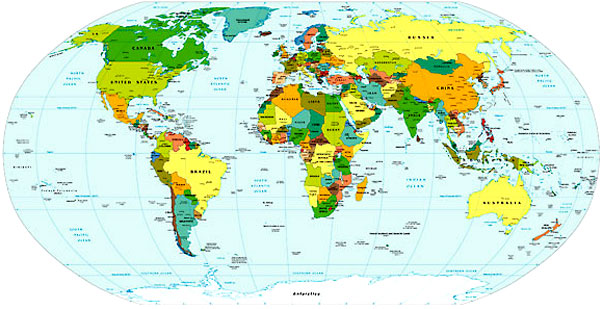 Another new thing I learned from this project: there is such a thing as a “doubly landlocked country”—though there are only two of them in the world. Liechtenstein is, however, one of those two. (The other is Uzbekistan… we’re not there yet.) 15 August is Liechtenstein’s National Day. So just what is a doubly landlocked country? It’s a country entirely surrounded by landlocked countries: to get to the sea you have to cross at least two borders. Also, it’s the only (solely) German speaking nation (official language, obviously) not to share a border with Germany. (Most actually speak a dialect know as Alemannic, which differs substantially from standard German.) Forgotten the capital? I’ll forgive you—it’s a tiny, tiny country. (The answer is Vaduz.)
Another new thing I learned from this project: there is such a thing as a “doubly landlocked country”—though there are only two of them in the world. Liechtenstein is, however, one of those two. (The other is Uzbekistan… we’re not there yet.) 15 August is Liechtenstein’s National Day. So just what is a doubly landlocked country? It’s a country entirely surrounded by landlocked countries: to get to the sea you have to cross at least two borders. Also, it’s the only (solely) German speaking nation (official language, obviously) not to share a border with Germany. (Most actually speak a dialect know as Alemannic, which differs substantially from standard German.) Forgotten the capital? I’ll forgive you—it’s a tiny, tiny country. (The answer is Vaduz.) I have a confession to make. I recently discovered that the television series Dynasty is available to watch online—well, the first two seasons. So when I read about the “Liechtenstein dynasty” I have to admit my mind does stray towards the Carringtons. Is that an unforgivable offence? You have come to expect these moments of lowbrow from me, haven’t you?
The Liechtenstein dynasty comes from the Castle Liechtenstein, which is in Lower Austria. (It being in Liechtenstein would be too obvious.) The family held the castke from 1140 until the thirteenth century—and then apparently from 1807 onwards. It all gets a little confusing. (Hey, that’s what dynasties are all about, right?)
 To fastforward a little, Liechtenstein joined the German Confederation, which came about in 1815, and continued to advance its society. The product of its first factory? Ceramics. The year its first cotton-weaving mill was founded? 1861. How about bridges? A lovely pair were built over the Rhine in 1868. Once you have bridges, you clearly need a railway line, so one was constructed across Liechtenstein in 1872. It must have been interesting to watch all this taking place, given how small the nation is.
To fastforward a little, Liechtenstein joined the German Confederation, which came about in 1815, and continued to advance its society. The product of its first factory? Ceramics. The year its first cotton-weaving mill was founded? 1861. How about bridges? A lovely pair were built over the Rhine in 1868. Once you have bridges, you clearly need a railway line, so one was constructed across Liechtenstein in 1872. It must have been interesting to watch all this taking place, given how small the nation is. It was only after World War I that the country really began to function independently. Before the end of that war Liechtenstein was closely associated with Austria; following World War I it moved closely to its other neighbour, Switzerland. And though I’ve read that there was a Nazi sympathy movement in the lead up to World War II, Liechenstein again followed Switzerland’s lead and remained neutral—in fact, a lot of treasures were brought to Liechtenstein for safekeeping.
After the war years the Liechtenstein dynasty reportedly had a spot of financial both—selling family treasures, including the da Vinci portrait “Ginevra de’ Benci” in 1967. These days, though, the Prince of Liechtenstein is the world’s sixth richest leader. Hans-Adam II was born in 1945 and (sorry ladies) is already taken. His country enjoys a high standard of living these days too.
An odd fact about Liechtenstein? The majority of the world’s dentures are made there. Visit a tax haven, come back with false teeth. Now there’s a catch phrase.
A poem? In the end I’ve chosen a poem from a Croatian poet—Vlado Franjevic—who now lives in Liechtenstein. The other poet I found was born in Liechtenstein but lives in Austria—and her poem was too unwieldy for this little space. I found this morsel online here.
By the Small Window
by the small window
one detects still another smaller
and by this
a quite tiny
with a gold-flacky framework
who knows who is behind there
—Vlado Franjevic


1 comment:
heeey! I didn't know until now, You used my poem in Your project! great. it's a compliment! thanks a lot! with my best wishes from liechtenstein.
Post a Comment